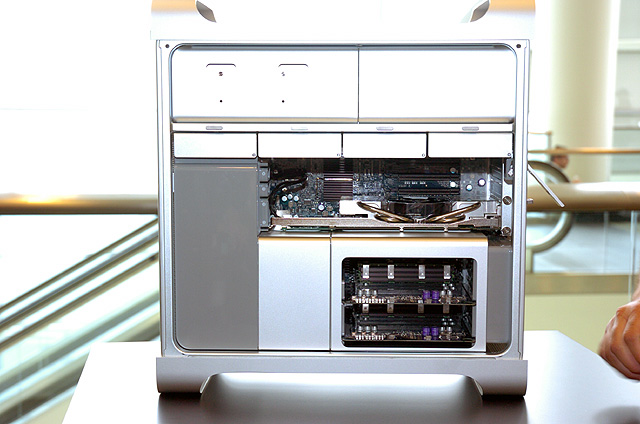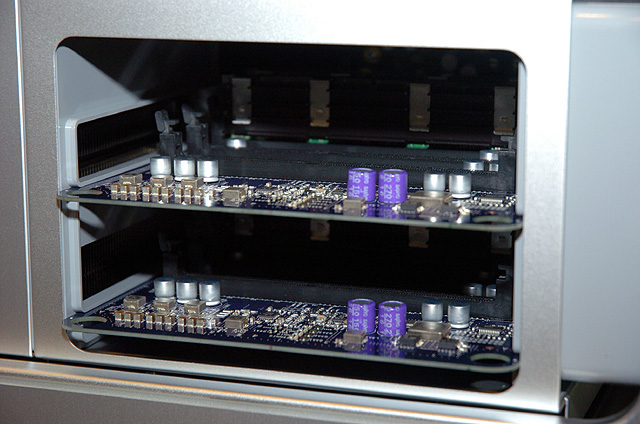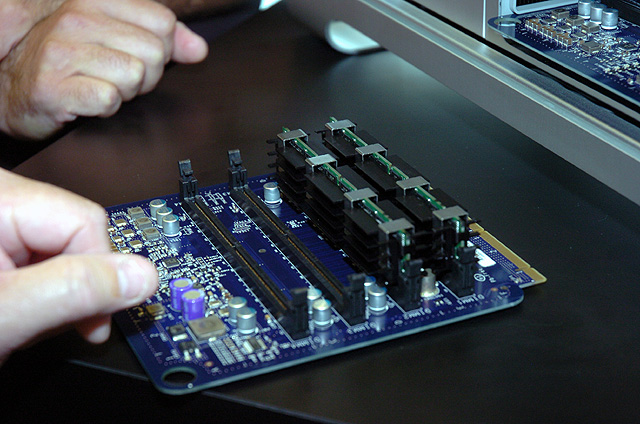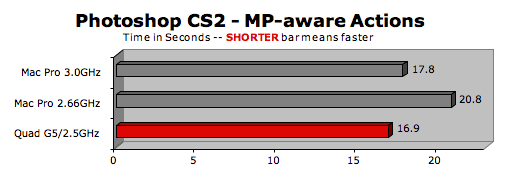I was pretty underwhelmed, but only because the most recent talk has been about the iPhone and Finder.
I thought the Time Machine sounded lame as all get out until I saw the graphical look of it. Now THAT actually looks worthwhile. What's best is that it'll probably be pretty darn fast, since it's clear they're using metadata to populate the actual zoom back (as indicated by the preview window). So that'll probably be more useful to me than Dashboard or Spotlight, depending on how flexible they are regarding external hard drives.
The Mac Pro looks like a beast, but might actually be less practical than it seems, because now the hard drives pretty much have to be provided by Apple. They need to become more standards friendly, not less (even though, yeah, installing an HDD into an array the old fashioned way is a pain by comparison).
The expose-like thingy of Spaces was the only thing that set it apart from current desktop managers for OS X. Hopefully it's as flexible. For example, an application's various windows should be able to be spread out over multiple spaces. One feature that probably won't make it (because it's not reality-analogous) is no mirroring of an app across all spaces. Also, how are they going to handle multiple desktops?
Overall, so-so show. Predictable, but solid. 64-bit apps at the user level should be slick, as having Intel ASM in 64 bit should be a cut above the G5 days.
I thought the Time Machine sounded lame as all get out until I saw the graphical look of it. Now THAT actually looks worthwhile. What's best is that it'll probably be pretty darn fast, since it's clear they're using metadata to populate the actual zoom back (as indicated by the preview window). So that'll probably be more useful to me than Dashboard or Spotlight, depending on how flexible they are regarding external hard drives.
The Mac Pro looks like a beast, but might actually be less practical than it seems, because now the hard drives pretty much have to be provided by Apple. They need to become more standards friendly, not less (even though, yeah, installing an HDD into an array the old fashioned way is a pain by comparison).
The expose-like thingy of Spaces was the only thing that set it apart from current desktop managers for OS X. Hopefully it's as flexible. For example, an application's various windows should be able to be spread out over multiple spaces. One feature that probably won't make it (because it's not reality-analogous) is no mirroring of an app across all spaces. Also, how are they going to handle multiple desktops?
Overall, so-so show. Predictable, but solid. 64-bit apps at the user level should be slick, as having Intel ASM in 64 bit should be a cut above the G5 days.





